Lab-to-Lab: US-Russian Lab-to-Lab Collaboration Story [Archived]
Early Lab-to-Lab | Export Control | Nielsen Jr. | Symposia | WSSX
Physics | Reminiscences of Russia | Caroline (Cas) Mason
- Setting the Stage
- Forming Collaboration
- Frequent Experimental Campaigns Part 1
- Frequent Experimental Campaigns Part 2
- Broadening and Declining Collaboration
- Restoring Collaboration
- Epilogue 2006-2016
- Concluding Remarks
June, 1992
Bob Reinovsky, Steve Younger (who had been appointed administrative point-of-contact for our interactions with VNIIEF after the September 1991 proposal was received), 74-year-old Max Fowler (the U.S. pioneer in magnetic flux compression) and I returned to Sarov in June, 1992. We left Moscow by train on a beautiful summer evening. At approximately 11 PM, the train pulled into a station along the route. Our Russian hosts informed us that the train would be stopped for some period of time, so that we could go out on the platform and enjoy the mild temperature of the wonderful evening. We were traveling on a “sleeper” car, so that each of us had our own bed in a two-bed compartment shared with one other traveler. Because of the strenuous trip and the hour, all of us were preparing to go to bed, and Max had already put on his pajamas. Nevertheless, we were able to talk Max into going out onto the train platform. To the surprise of all of us, including our Russian hosts, the train started moving while we were still on the platform. Getting our panicked selves and Max onto the slowly moving train was no small fete, but we did it. We have joked may times since then asking ourselves, if we had caught the train but Max didn’t, how would we have explained to our masters at LANL and at DOE that the last time we saw Max was on a train platform in the middle of Russia and he was dressed in pajamas!!!
As Program Director for Above Ground Experiments (AGEX), Younger put out a monthly newsletter that was distributed to a hundred or more people within and outside LANL. However, as something that indicates the camaraderie of our team, a special version of the newsletter was prepared, one with a picture of the delegation on the train platform, with Max standing next to Lena Gerdova. The picture caption identified Max as “…Max Fowler (pajamas, with Russian woman).” Only four copies were made: one for each of the travelers. We didn’t tell Max for about a week that this version was a fake. We suspect that he was somewhat concerned that such a picture, with such a suggestive caption, had been distributed outside the Lab, but he really wouldn’t let on.
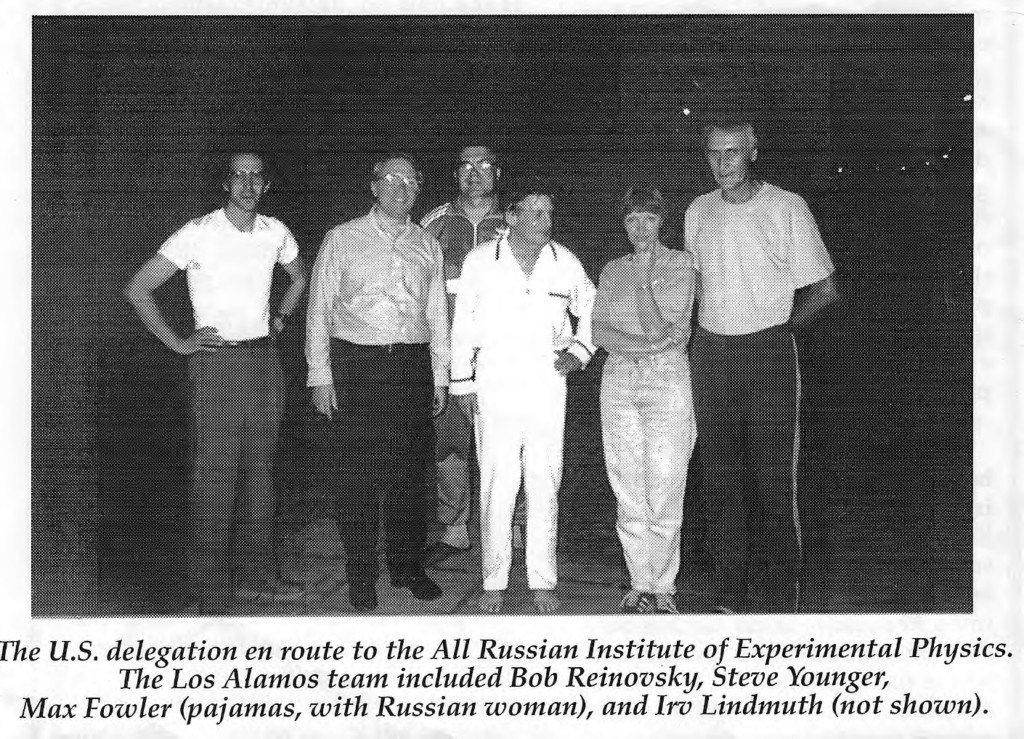
Fig. 6. Cover photo of special 4-copy issue of the July 1992 Los Alamos ICF AGEX II News.
During the visit, the LANL team witnessed an MC-1 high magnetic field experiment at Pavlovskii’s firing point. Pavlovskii asked Fowler to push the button that set off the experiment, and Fowler was presented a bottle of vodka as payment for his services to VNIIEF.
March 1993
Five members of the LANL team visited VNIIEF in March (Carl Ekdahl, Dennis Erickson, Jim Goforth, Younger, and myself) to further define LANL’s role in the first joint experiment, then scheduled for August. In January 1992, we had started carrying with us unclassified Joint Operations Graphic maps of Sarov and the surrounding area, maps that had been prepared and published by the U.S. Defense Mapping Agency Aerospace Center. These maps helped us get our bearing, particularly on excursions outside the city. We are sure these made VNIIEF security personnel somewhat uncomfortable, particularly because we were immediately surrounded by Russians whenever we pulled the maps from our briefcases; evidently, many had never seen such a detailed map of their area.
For an encore, on the March trip we carried with us unclassified Landsat images of the entire Sarov townsite. Before presenting them as a banquet gift to VNIIEF deputy director Tumanov, we asked those in attendance to try to remember what they were doing on May 2, 1984, the date of the photos. Faces puzzled at why we would ask such a question quickly turned to smiles and laughter as the photos were revealed.
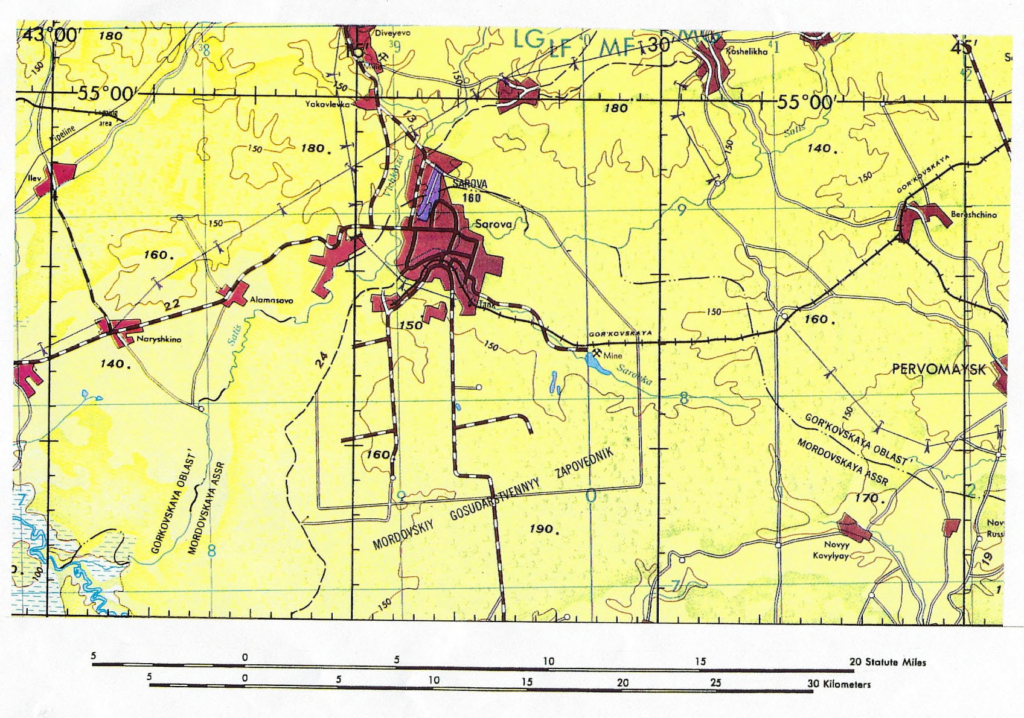
Fig. 7. A Joint Operations Graphics map showing Sarov and vicinity.
These photos evidently made a lasting impression. As a result of these photos, a large relief map, perhaps 8 feet square, of Sarov was declassified and displayed in the VNIIEF museum, where it was viewed frequently by LANL delegations (although we were not allowed to photograph it). In addition, the documentary “From Confrontation to Collaboration” that VNIIEF presented to LANL later in the year in commemoration of LANL’s 50th anniversary noted that “the changes in the world have made it possible for Americans to not only see our city from a satellite but also to visit it,” an apparent reference to these photos. To this date, I occasionally pull out the maps to reflect upon my many wonderful experiences in Russia.
June 1993
I travelled to Russia primarily to participate in the Third International Youth School on Plasma Physics and Controlled Fusion, but the trip also provided an opportunity for technical and administrative discussions with VNIIEF personnel who travelled to Moscow. I also spent some time working on travel arrangements for VNIIEF scientists who were to travel to LANL in the near future.
The Third Youth School was held on a ship that spent several nights in St. Petersburg, then cruised the Neva and Svir rivers and visited the ancient settlements on Kiji and Valaam. The School provided a unique opportunity to take my wife, Hedy, and youngest daughter, Lori, to Moscow and Russia. Hedy had previously accompanied me in September 1991 to the Second Youth School in Sochi.
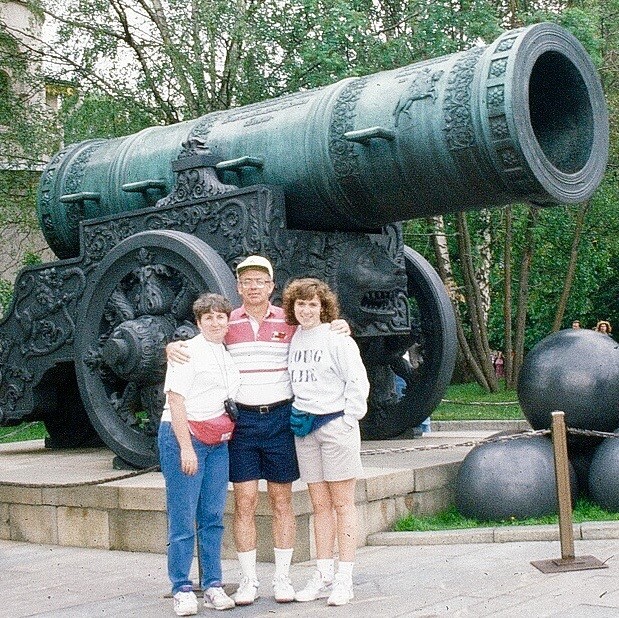
Fig. 8. The author with his wife, Hedy (l), and youngest daughter, Lori, in front of the “Czar cannon” in the Kremlin (Moscow, June 1993.
Because of her earlier commitments, we had to send Lori home before the ship departed from St. Petersburg. The subsequent cruise was quite enjoyable. However, at about 3 AM one morning, the ship ran aground in the middle of Lake Ladoga. Rumor had it that the captain of the ship was drunk and had strayed outside the dredged channel. Approximately three hours of manipulating the ships thrusters and propellers were required to free the ship, which sustained no noticeable damage and proceeded on its course, once freed.
August 1993
After a number of schedule delays, a LANL team (Goforth, Reinovsky, Rodriguez, Younger, and myself) made a second trip in preparation for the first joint experiment. We had our first encounter with the wonderful hospitality of Vladislav Mokhov and his wife at Mokhov’s home (originally built for Khariton), where we learned that “you are not required to drink [alcohol], but your glass must always be full.” When the attacks from the famous Russian mosquitos became too frequent, the visitors moved inside while Mokhov and I broke through thick mosquito-infested bushes to pass a table from outside through a rather high bedroom window, a surely comical sight.
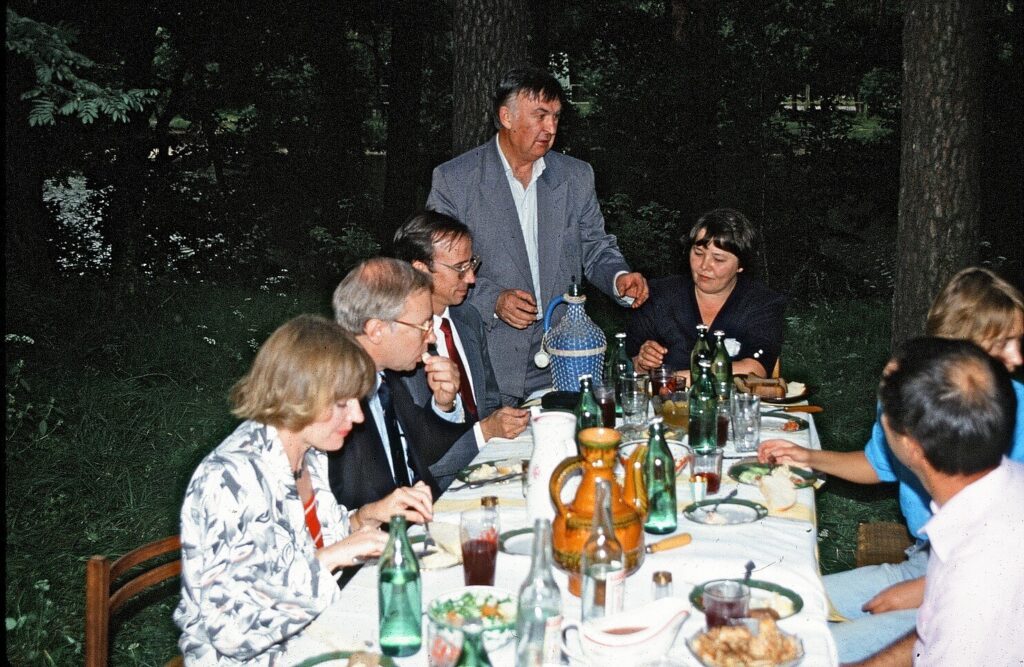
Fig. 9. Picnics at the home of V. Mokhov, a house initially built for Yu. B. Khariton, were always a high point of the LANL team’s visits to Sarov.
Mokhov’s homemade cherry wine made a lasting impression on us. One of our team members, who will remain unnamed, insists to this day that the stabilization he received from his teammates was not necessary and he really could have walked unassisted from Mokhov’s home back to our hotel.
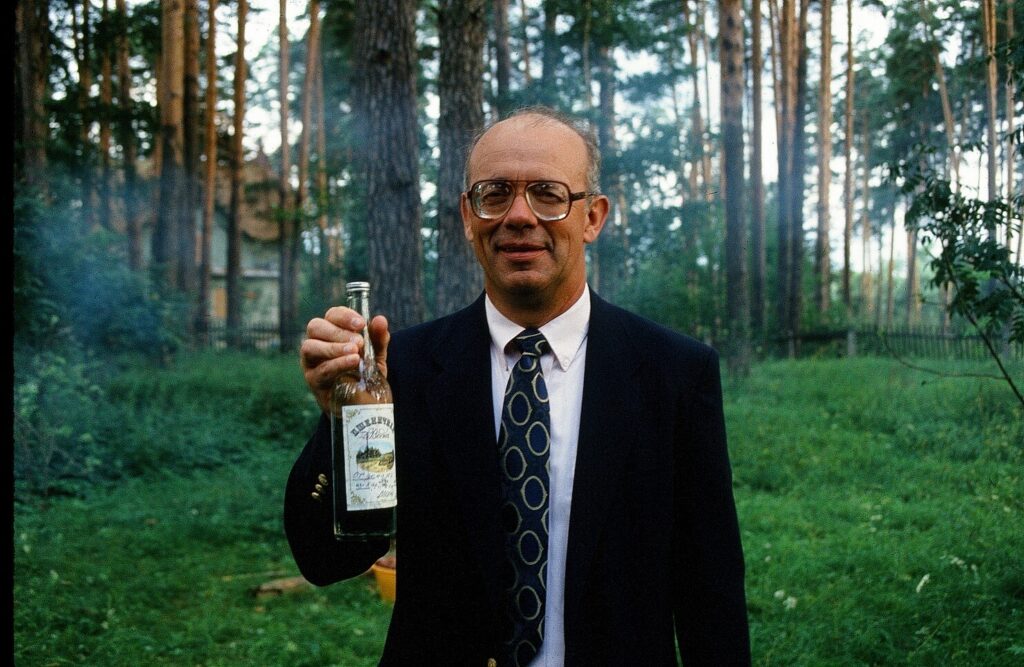
Fig. 10. A souvenir bottle of vodka “from the house of Yu. B. Khariton.” (Sarov, August 1993).
The Chernyshev team always seemed anxious to compensate the LANL team for the several schedule delays. On this trip, Chernyshev offered Goforth, our flux compression generator expert, an unprecedented look at the “guts” of the experimental apparatus as it sat on the assembly bench. When it became apparent that Goforth was too short for such a view, a muscular VNIIEF technician grabbed Goforth by the waist and lifted Goforth above his shoulders so that Goforth could look down inside the vertical cylinder.
I returned to Russia through Philadelphia. My Dad had suffered a major stroke and passed away while I was overseas. During my time in Philadelphia, driven by my curiosity to learn more about Sarov, my mother and I visited St. Andrews Russian Orthodox Cathedral. Surprised to find such a church in Philadelphia, I learned that it had been started by Russian naval officers who were in Philadelphia to watch Russia’s most famous battleship, the Variag, being built at Phildelphia’s ship yards (at a later visit to Sarov, I was to hear the children of school #2 sing a ballad about the Variag).
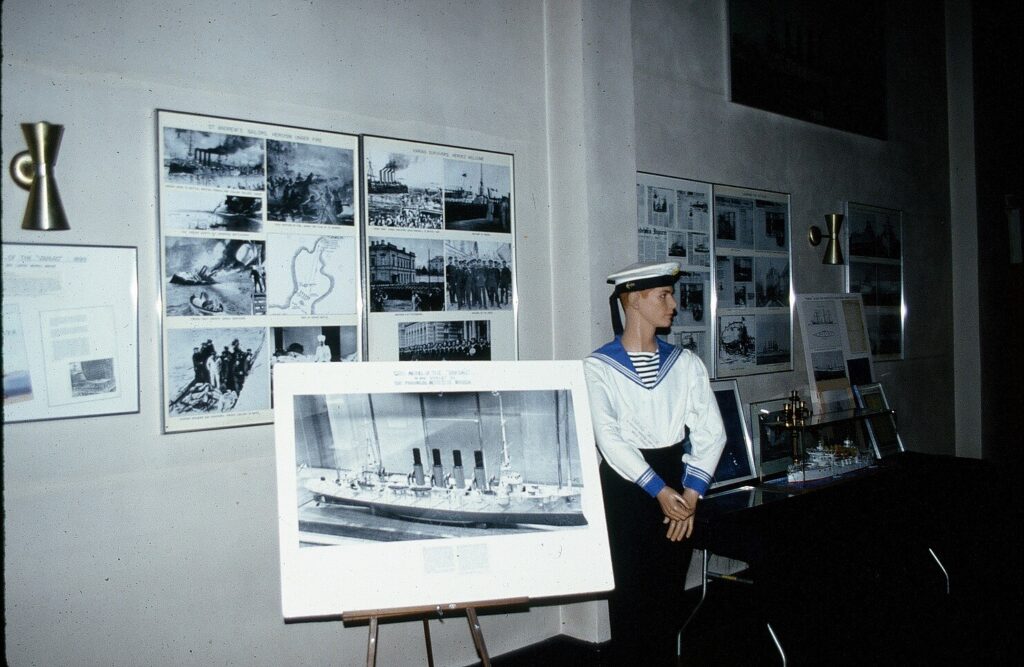
Fig. 11. A photo of the Russian battleship. Variag stands in the social room of St. Andrews Cathedral in Philadelphia, PA.
When I asked the priest at St. Andrews about Sarov, he described it as ‘the most beautiful of all monasteries in Russia, but we lost contact with it after the Revolution.’ He further stated that St. Seraphim was ‘perhaps the second most important saint of the Russian Orthodox church, having restored the monastic life to the church,’ and he showed me several icons of St. Seraphim. He, of course, was curious as to why I was asking these questions, so I described what I knew about the town and showed him a Sarov newspaper that I had obtained on my most recent visit to Sarov. To say that he was amazed is an understatement. A year or two later, I returned to St. Andrews and presented to the congregation a slide show on what I knew was going on in Sarov.
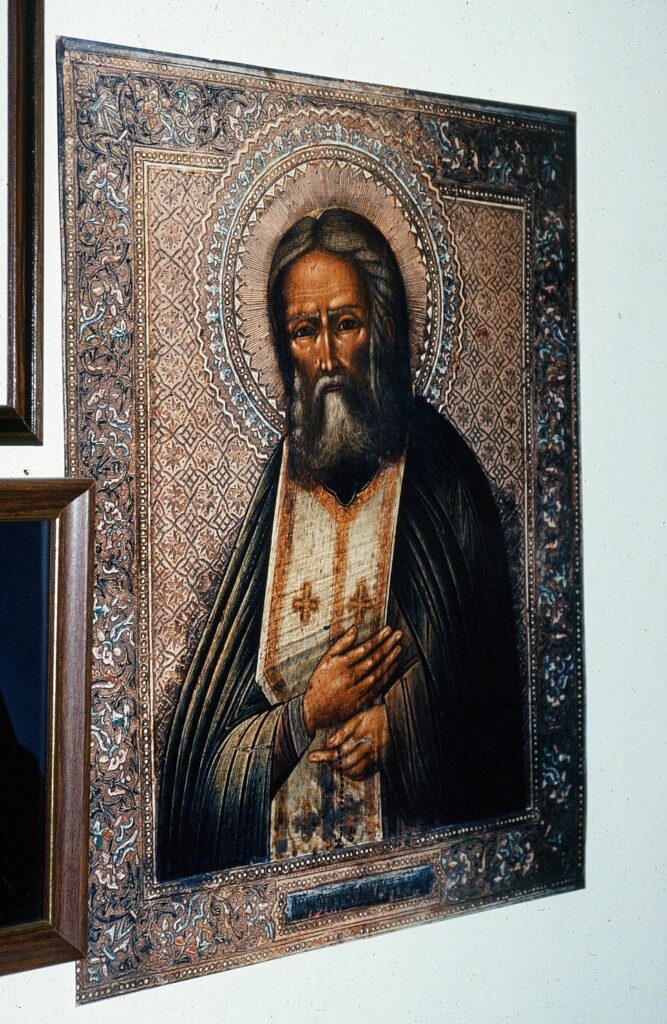
Fig. 12. An icon of St. Seraphim of Sarov hangs in the office of the priest at St. Andrews Cathedral in Philadelphia, PA (August 1993).
Next >> Frequent experimental campaigns and reciprocal visits 1993-1997: Part I >>
